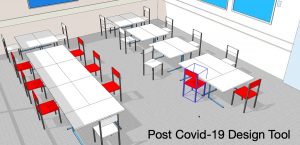Architecture trends and technology predictions for next decade

GlobalData has asked eight architects, designers and industry experts to give their predictions for architecture trends and technologies in the 2020s.
Technology to be merged with creativity
“Over the next decade, architects will have to master data and learn to utilise the newest innovations to streamline the design and construction process and make it integral to their client offering. In many ways, a greater adoption of automation could revive creativity in architecture, generating a platform for the development of new skills within the industry.
“The next decade is going to see a wealth of opportunity to modernise our cities and industry. This modernisation must be sustainable and innovative, rising to the challenges posed by climate change and the integration of technology to create something fitting of the 2020s – whatever they may bring.”
Pete Ladhams, managing director of Assael Architecture
Zero-carbon and a reduction in medium size practices
“Architects have driven the green agenda for years, and I believe this will continue to become more dominant with zero-carbon buildings becoming the norm. Overall, this will be housing-led with commercial buildings behind the curve on this trend.
“I believe architectural practices will either become large or small businesses. Medium size practices will reduce in number and will only be sustainable through a key specialism. A major threat facing our industry will be the continued trend of architects concentrating on concept design.
Paul Starbuck director at retail, sport and leisure specialists LK2
Technology will have subtle influence
“We believe that the way technology will influence the future of architecture is very subtle, as technology now is slowly blending into the built environment. Using the data that the ‘smart city’, home or office sensors will provide us with a very valuable feedback loop that we can use in order to adapt our designs to the very fast changing society we now live in.”
Chybik+Kristof, architects and urban designers
Architects to help drive a sea-change in sustainable building
“Architects are going to have a stronger place in the design of the future. They will be key to the sea-change in attitudes on planning where at present it is a negative process: ‘how developers or owners are reigned in on proposals’.
“Architects will return to the forefront of the construction team, but not in the same way that they used to be in the post-war years; more as leaders of a sustainable build revolution.”
Robert Adams, founder, Adams+Collingwood
Fewer architects, more in-house roles
“Architects are not going to be around in such numbers in the future, and they won’t be solely employed by large architectural firms.
“Modern methods of construction (MMC) are creating a ‘plug-and-play’ element to design which has the potential to turn all of us into architects. This is already happening, with many modular specialists able to adapt their build systems to a variety of scales and designs.
“We see a future where architects are employed in-house at offsite development companies like ours, and work alongside engineers as part of large multi-disciplinary teams to improve the aesthetics of buildings constructed using modular principles.”
Steve Wilkie, director of Built & Spaces
Great modularisation, automation and sustainability legislation
“Housebuilding needs to change massively and become modular. The problem is that housebuilders are resistant and want to carry on as before: building phase 1, stimulating demand and then building phase 2 with increased sales prices. Modularisation across construction generally needs to broaden and become more competitive. Only a handful of companies do it all right now and there’s always a concern about supply.”
David Holt, founder, 74
Virtual reality is architecture’s next big thing
“Virtual reality (VR) is the next big thing in architecture for sure. In the next 10 years, offering VR as part of the design process will be standard practice throughout the industry, even for smaller firms.
“We have already been using VR for some time and our clients have been blown away by it. Instead of trying to figure out complex architectural drawings, they can simply pop on a headset and walk around inside the designed space. By the end of the 2020s, 2D design concepts should be obsolete.”
James Brindley, director, Designhause Architecture
Fewer architects, more in-house roles
“Architects are not going to be around in such numbers in the future, and they won’t be solely employed by large architectural firms.
“Modern methods of construction (MMC) are creating a ‘plug-and-play’ element to design which has the potential to turn all of us into architects. This is already happening, with many modular specialists able to adapt their build systems to a variety of scales and designs.
“We see a future where architects are employed in-house at offsite development companies like ours, and work alongside engineers as part of large multi-disciplinary teams to improve the aesthetics of buildings constructed using modular principles.”
Steve Wilkie, director of Built & Spaces
Digitisation to bring further transformation
“Digitisation is transforming the building services industry and while it is taking time to be adopted, the future has significant opportunity not yet explored. The creation of off-site precision engineered systems fitted with multiple sensors to monitor and adapt operation with real time response will improve the quality of buildings and ultimately the lives of those who use them.
(article taken from world architecture news)








